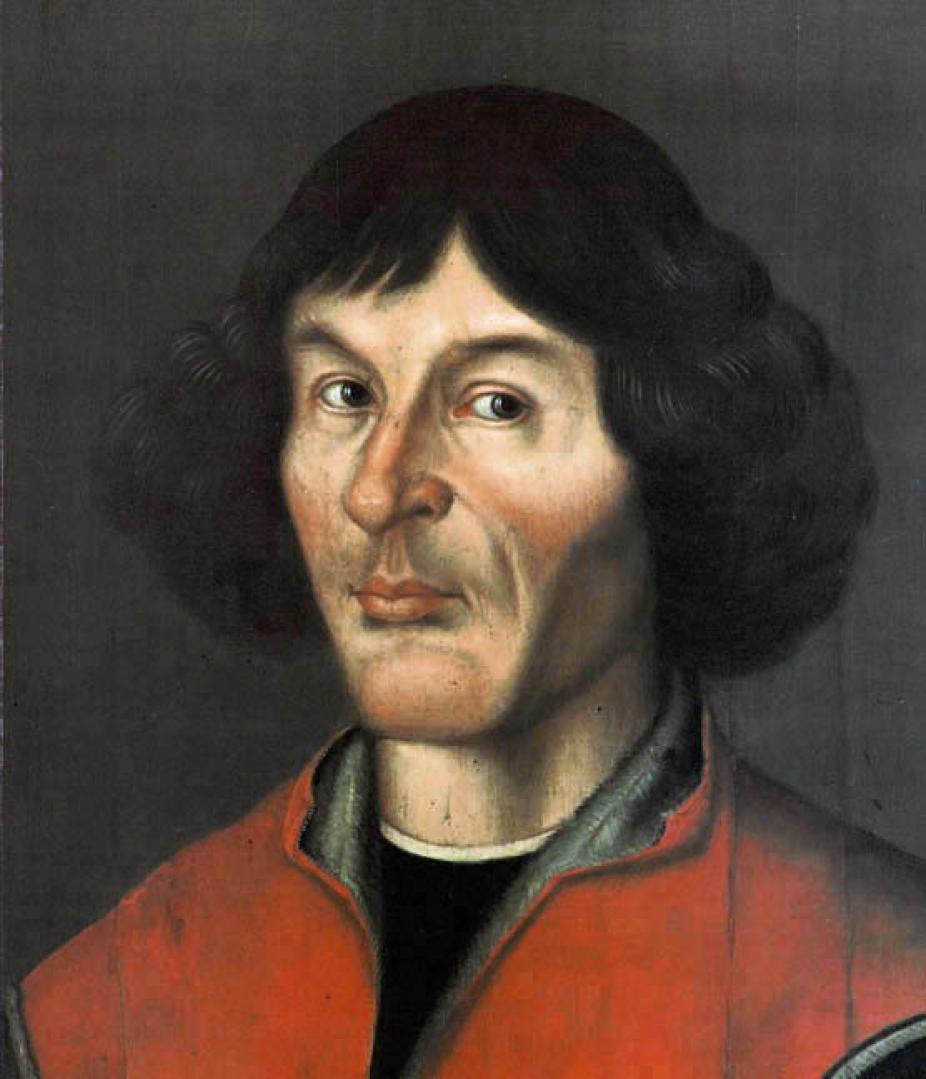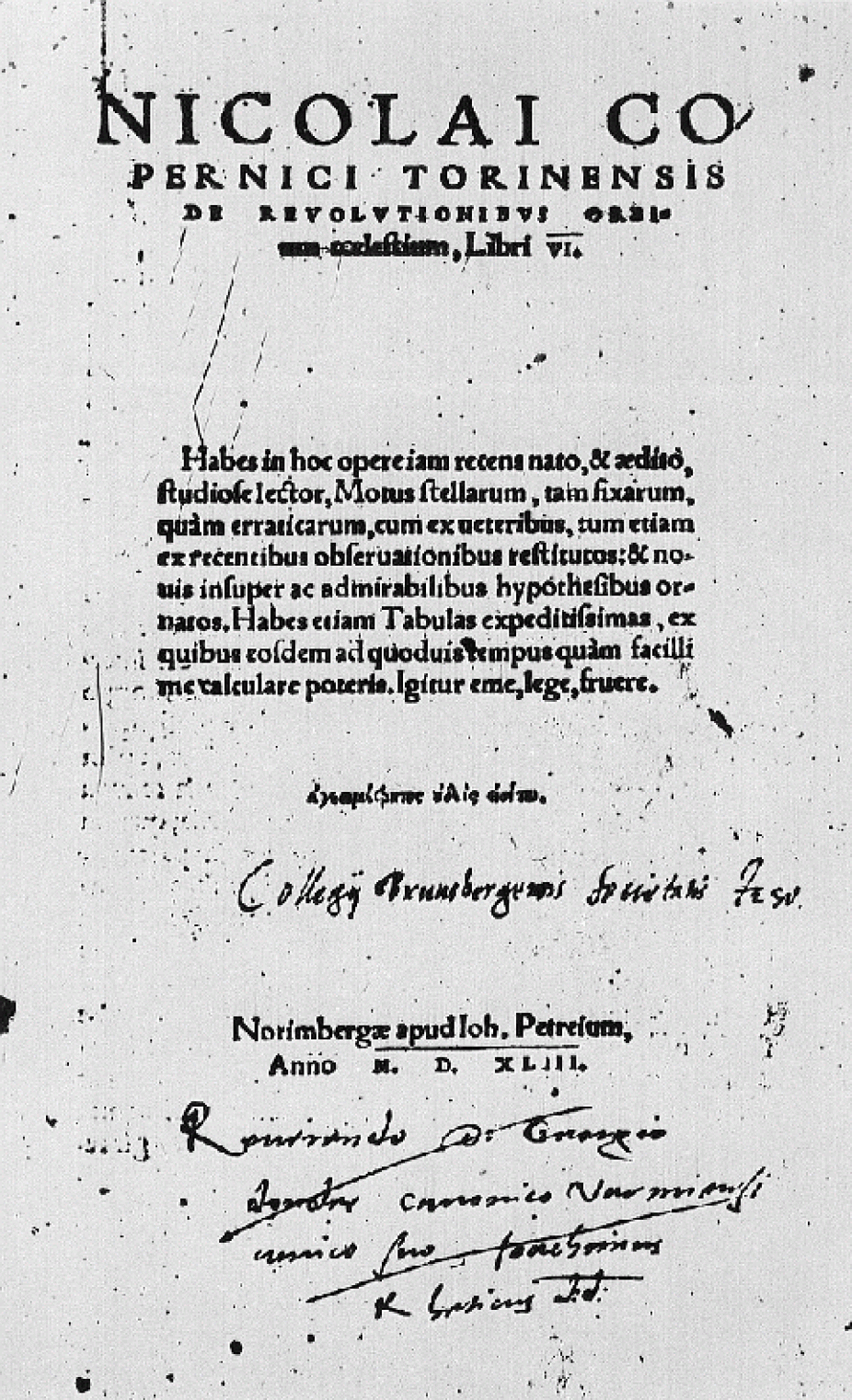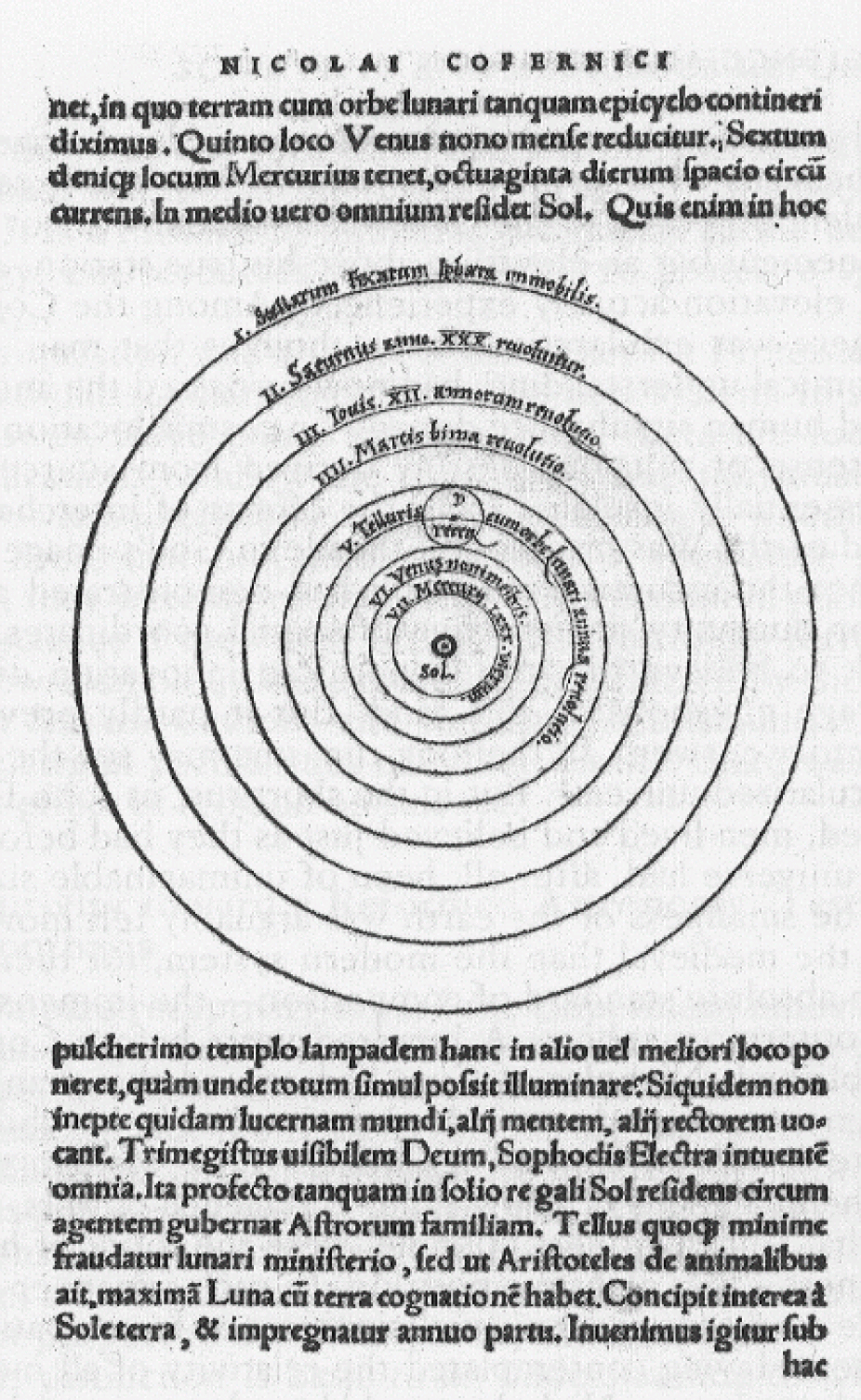Nicolaus Copernicus (1473–1543)

Painting of Nicolaus Copernicus.
Wikipedia
Nicolaus Copernicus was born on February 19, 1473 in Torun, Poland. He first studied at Cracow, then was sent to Italy to study Canon Law at the University of Bologna. In 1501 he began medical studies at the University of Padua, and finally took his Law degree at the small University of Ferrara. In 1497, while still in Italy, he was made Canon of the Frombork [Frauenberg] cathedral by his maternal uncle and protector Lucas Watzenrode, bishop of Varmia. This provided Copernicus with a secure and relatively well-paid position which he held to the end of his life, allowing him the freedom to pursue his interest in astronomy.
Copernicus’s model of the universe proposed that the sun was stationary in the center of the universe and the earth revolved around it -- a controversial idea at the time. George Joachim Rheticus (1514–1574), who joined Copernicus in Frombork in 1539 as his first and only disciple, published his “Narratio Prima” in 1540, a preview of the Copernican planetary model. Copernicus' landmark work "De Revolutionibus Orbium Coelestium" (On the Revolutions of the Heavenly Spheres) was dedicated to Pope Paul III and published in 1543, as Copernicus lay on his deathbed. Copernicus died on May 24, 1543, at age 70 and was buried in Frombork Cathedral in Poland.
Bibliography
Copernicus, N., On the Revolutions. Edited and translated by E. Rosen, The Johns Hopkins University Press, 1992.
Rusinek, M. 1973, Land of Copernicus. Twaine Publishers, N.Y.
Copernicus' Writings
Copernicus' De Revolutionibus

Title page of Copernicus' "On the Revolutions" (De Revolutionibus Orbium Coelestium).
"On the Revolutions" was published in 1543 in Nuremberg as Copernicus lay on his deathbed and was dedicated to Pope Paul III. The second edition was printed in Basel in 1566, and the third in Amsterdam in 1617.
Copernicus's book did not create controversy in the years following its publication. Its main idea has been in circulation among astronomers for over 30 years, and a preview of the book's content, the "Narratio Prima" of Georg Joachim Rheticus, had been published in 1540. The "Copernican planetary model" was absorbed and commented upon in the contemporary technical astronomical literature, notably by Michael Maestlin and the leading Jesuit astronomer, Christoph Clavius. In 1551 Erasmus Rheinhold (1511–1553) published the "Prutenic Tables" of planetary positions, which were based on the Copernican model and enjoyed quite a bit of success.
Religious authorities at first did not react to the book's publication. This was likely due, at least in part, to the addition of an anonymous preface, written by the publication's overseer Andreas Osiander, to the effect that Copernicus' "planetary model", (see below), should be treated as an hypothesis to facilitate the computation of planetary positions. This situation was to change once Galileo began his so-called Copernican Crusade. "De Revolutionibus" was suspended pending minor corrections following the 1616 Roman decree against Copernicanism. Following the controversy over the world systems, culminating with the publication of Galileo's "Dialogues" and his subsequent trial by the Roman Inquisition, the book was banned, and remained on the Index of prohibited books until 1835.
Bibliography
Copernicus, N., On the Revolutions, edited and translated by E. Rosen, The Johns Hopkins University Press, 1992.
Kuhn, T.S. 1957, The Copernican Revolution, Harvard University Press.
Gingerich, O. 1993, The Eye of Heaven, American Institute of Physics.
The Copernican Planetary Model

The Copernican Planetary Model.
In the Copernican system the Earth is given three distinct motions: A daily axial rotation, an annual rotation about the Sun, and a third motion related to precession. As acknowledged by Copernicus himself in the introduction of his book, the heliocentric hypothesis goes back to antiquity, with Aristarchus of Samos (ca. 310-230 BC). In "De Revolutionibus" Copernicus mentions Philolaus, in reference to the Pythagorean school in general, and the hypothesis of the Earth's axial rotation to Heraklides of Pontus (ca. 388-310 BC).
The Copernican model has two observational consequences that were not observed at the time, which greatly bothered Copernicus. First, because of the Earth's motion about the Sun, the stars should show an annual parallax; in fact they do, but the distance to the stars is so much larger than believed in Copernicus' days that the effect is only detectable telescopically. Second, because Mercury and Venus orbit the Sun they should show phases similar to the Moon's. Again they do, but observational confirmation of this had to await Galileo Galilei and the telescope.
Contrary to a common opinion still perpetuated today in some introductory astronomy textbooks, Copernicus did not eliminate Ptolemy's epicycles from planetary theory. As a consequence his model was not particularly more accurate than Ptolemy's at predicting planetary positions. It was Johannes Kepler who brought the heliocentric system to its modern form.
Bibliography
Copernicus, N., On the Revolutions, edited and translated by E. Rosen,The Johns Hopkins University Press, 1992.
Kuhn, T.S. 1957, The Copernican Revolution, Harvard University Press.
Gingerich, O. 1993, The Eye of Heaven, American Institute of Physics.